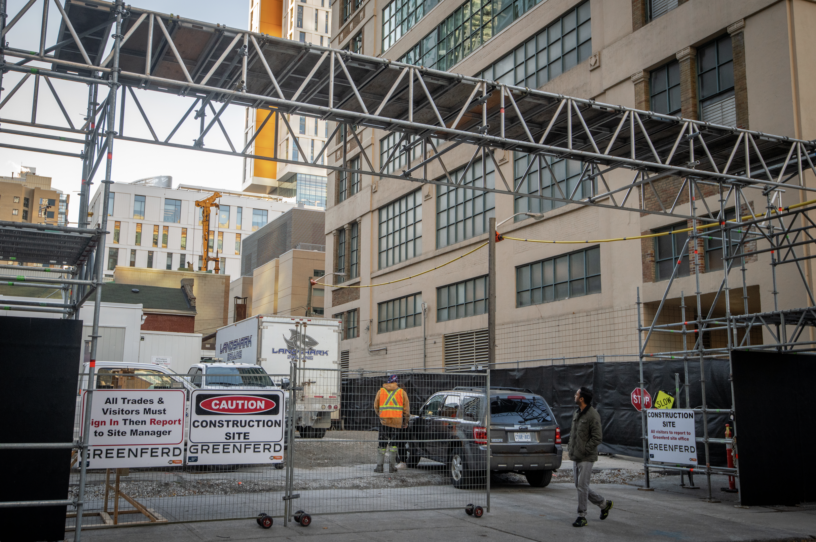By Dylan Marks
Toronto Metropolitan University (TMU) is building the world’s first-ever smart building research facility. The Smart Campus Integration and Testing Hub (SCITHub) is set to open in fall 2025 and will be the world’s first fully digitally-enabled building.
The SCITHub will integrate a large range of building systems technology including heating, ventilation, air conditioning (HVAC), lighting, building envelope, security, IT and communications. This will aim to advance Canada’s built environment toward net-zero emissions, according to their website.
The building will be located at 136 Dundas Street East on the northwest corner of the intersection at Dundas Street East and Mutual Street, 300 metres from Yonge-Dundas Square.
The building’s construction figure is approximately $7.5 million and is being funded by a combination of public grants and private donations according to a statement from the university. The Eyeopener reached out to the school for confirmation on which specific donors for public grants and private donations are involved but did not receive comment in time for publication.
According to TMU architectural science professor and SCITHub principal investor Jenn McArthur, the SCITHub will be “a purpose built research facility and is going to support smart home, smart office, smart campus and smart city research.”
Smart technology includes features like self-regulating thermostats, enhanced security systems, smart home devices that allow users to remotely switch off lights, monitors for flooding and other innovative technologies.
“It sets a really good example for the university in making our buildings and future developments be more sustainable”
Plans for the SCITHub began in 2018 when digital automation and energy management corporation Schneider Electric Canada donated $1 million to design a smart buildings laboratory at TMU, though the official plans for development were not finalized until 2019, according to McArthur.
In 2021, a finalized design for the structure was submitted and McArthur said construction began on Oct. 22.
When asked about which faculty and students will benifit most from this building, TMU President Mohamed Lachemi said, “I can tell you many departments within different faculties would benefit from this, including mechanical, electrical and computer engineering…but also architecture, building science” in an interview with The Eye.
McArthur said the SCITHub aims to advance the school by prioritizing sustainability in terms of what kind of technologies will be used that won’t be harmful towards the environment, specifically focusing on utilizing net-zero technologies.
She added the building will have no gas connections, which will allow the facility to showcase the potential of net-zero technology.
Net-zero technology includes technology that can capture carbon prior to it getting released into the air. This includes clean heating, green hydrogen, smart grids, wood recycling and more.
“There’s a lot of worry that I think people have based on this assumption that heat pumps aren’t going to be able to keep buildings warm enough in the wintertime in Toronto and it’s not true, it’s not founded,” said McArthur.
James Southey, a third-year environmental and urban sustainability student and president of TMU’s Environment and Urban Sustainability Students’ Association, said the new SCITHub sets a strong precedence for students on how they can make a difference.
“I think it’s really important that TMU is doing this…it sets a really good example for the university in making our buildings and future developments be more sustainable,” Southey said.
McArthur stated that one of the main goals of SCITHub is to improve the school with the research conducted by it. This includes using specific decarbonization work to help inform new approaches to running and operating smart buildings.
“We hope that [the SCITHub] might be able to save some energy and make [the] campus more resilient to disasters, in terms of power outages,” said McArthur.











Leave a Reply